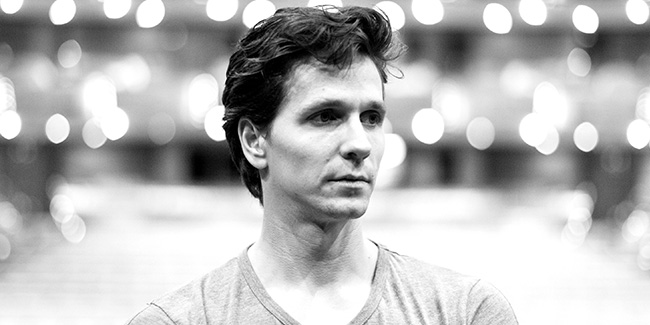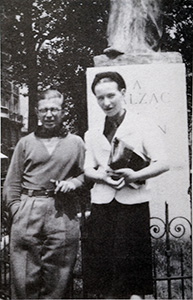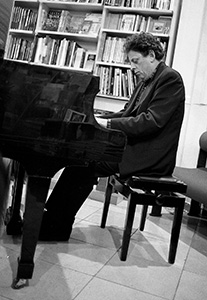By Simone Olivero
We must act out passion before we can feel it.” – Jean-Paul Sartre,
Being and Nothingness
A single, bare light bulb illuminates the darkened stage for the opening solo of Guillaume Côté’s Being and Nothingness. The solo serves as the backbone to a story exploring loneliness, self-discovery and what it means to be alive.

Growing up in Lac-Saint-Jean, Québec, Côté joined The National Ballet of Canada in 1998. In 2004 he was promoted to Principal Dancer and quickly became an audience favourite performing in classics like Swan Lake, The Sleeping Beauty, Romeo and Juliet, Cinderella and The Nutcracker, among others. Through the course of his career, he has travelled to cities such as New York, Milan and Hamburg to perform as a guest artist on some of the world’s most prominent stages. At age 33, Côté’s long list of achievements is not only impressive but continues to grow.
In 2012, Côté both choreographed and starred in the short film Lost in Motion, which was screened at the Toronto International Film Festival (TIFF). As an accomplished musician and composer the transition over to choreography was a natural one and led to his appointment as Choreographic Associate with The National Ballet of Canada in 2013.
 A philosopher, novelist, activist and literary critic, Jean-Paul Sartre was considered one of the greatest minds of the 20th century. His ideas about what it means to be human and how to define existence remain relevant. Living through the aftermath of both World Wars, Sartre found himself questioning the purpose of humanity and how to make sense of day-to-day life. His studies explored the meaning of being. He looked at existence, essence of existence and how consciousness, perception and free will came into play. These findings are best articulated in his masterpiece L'Être et le néant, translated into Being and Nothingness.
A philosopher, novelist, activist and literary critic, Jean-Paul Sartre was considered one of the greatest minds of the 20th century. His ideas about what it means to be human and how to define existence remain relevant. Living through the aftermath of both World Wars, Sartre found himself questioning the purpose of humanity and how to make sense of day-to-day life. His studies explored the meaning of being. He looked at existence, essence of existence and how consciousness, perception and free will came into play. These findings are best articulated in his masterpiece L'Être et le néant, translated into Being and Nothingness.
Côté was reading this when he was first approached by Greta Hodgkinson to create a solo. “While I was working on the solo I was surprised by how many aspects of Sartre’s theory began to come up,” explains Côté. “There was this idea of creating an image of ourselves, an ideal of what we should be and no longer living in the moment but rather somewhere between what we’ve done in our past and what we’re striving for in our future.”

Set to the repetitive, mesmerizing soundtrack by Philip Glass, the ballet is broken up into small narratives inspired by the theories in the book. These tiny vignettes speak to the struggles of every day life and the underlying angst of simply being alive. Côté explains, “After the wars people were faced with all of these questions: How do I go on with normal life? What is a normal life? Why do we exist when so many people have died? What’s the point of it all?” Through multiple pas de deux and ensemble pieces, the characters in Côté’s world play out these struggles.
“I hope that people are able to identify themselves within it,” says Côté. “In today’s society we’re constantly trying to live up to an image and I think it’s important to question our existence and our purpose.”